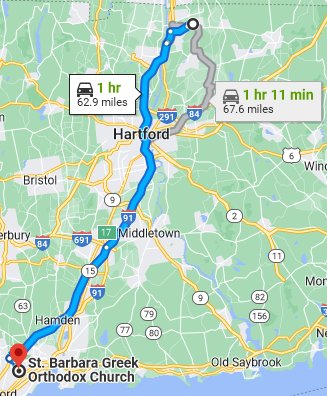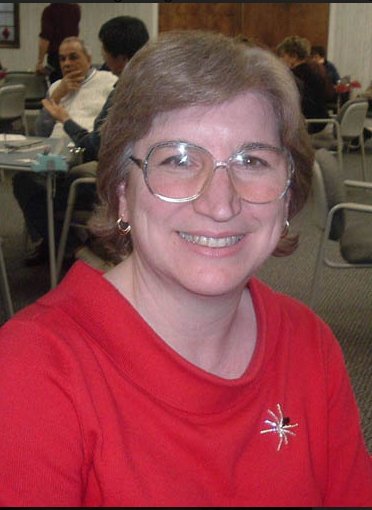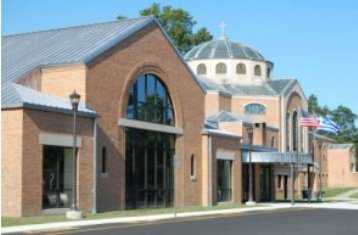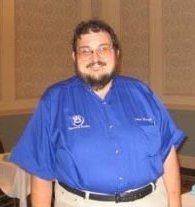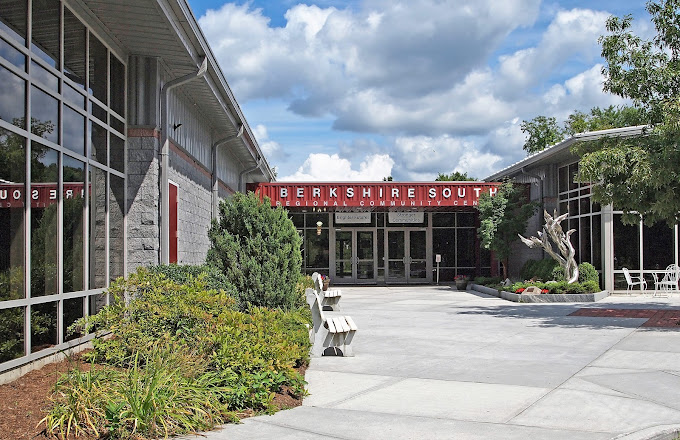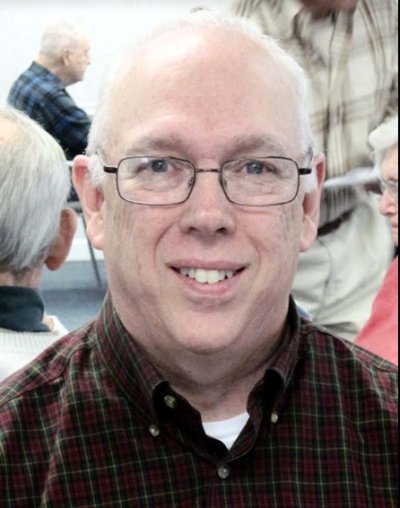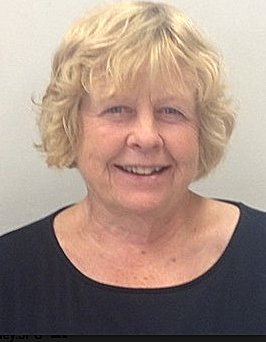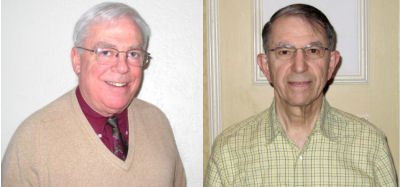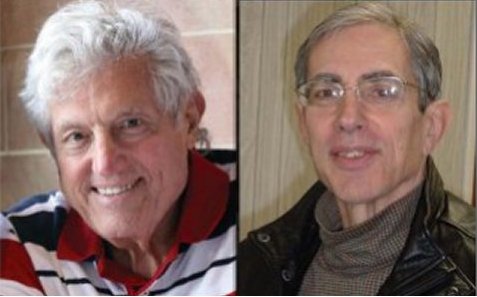Two Oranges Continue reading
If you are not familiar with competitive duplicate bridge in North America, you may wish to read the entry posted here first.
Because of the threat of COVID-19 only two bridge tournaments were held in all of New England in 2021. Both were three-day sectionals in Watertown, MA. 114 people won masterpoints in the first one in October. 178 people won points at the Holiday Regional in November. This was better, but still unspeakably bad attendance. In the last tournament held in Watertown in 2019 exactly twice as many people won points—356.
The tournaments in Watertown were run by the Eastern Massachusetts Bridge Association (EMBA). I was not a member, and I attended none of the three tournaments listed above. However, I was a member of the Board of Directors of the Connecticut Bridge Association (CBA), the “unit” for the state of Connecticut. The CBA ordinarily held six sectionals per year. Two of them were restricted to players with less than 199 masterpoints.
The June Tournament: I am pretty sure that the unit’s official bylaws required that the final decisions about the scheduling of tournaments be voted on by the board of directors. I can say without fear of contradiction that no such votes were taken between March 8, 2020—the last day of our last pre-pandemic tournament—and June 2022. In point of fact the board did not meet at all during that period. We did not even have a Zoom meeting.
Somehow a decision was made, probably after consultation between President Frances Schneider and Tournament Manager Cornelia Guest, to hold a three-day tournament on June 3-5, 2022 at the St. Barbara Greek Orthodox Church in Orange, CT. The schedule was essentially the same as used in 2019-2020. I don’t know who, if anyone, approved the date. The Rhode Island Bridge Association (RIBA) held a tournament the same weekend. The district was supposed to prevent conflicts like this, but someone evidently fumbled the ball.
The first notification of the tournament went out on May 8. Here was the text of the email.
Dear Michael,
CONNECTICUT 2022 SECTIONAL
June 3 – 5
St. Barbara Greek Orthodox Church480 Racebrook Road Orange, CT 06477
See the attached flier for tournament information.
The “attached flier” can be viewed here.
In my opinion the notification should have been sent earlier, and more effort could have been put into content of the email. For over a year the people whom we needed to attract had been paying only a few dollars to play bridge. Persuading them to return to face-to-face play and pay a lot more would require more effort than this brief announcement displayed.
As usual I sent an email to dozens of my partners past and present, but I only one responded to the invitation to play in Orange. Sonja Smith said that she could play with me in the pairs games on Saturday. She was a very good player, and I knew that she and her husband Chris were planning to move to North Carolina before the end of the summer. So, I jumped at this chance to play with her.
I was also committed to making the trip to Orange on Sunday if only to attend the board meeting that had always occurred on Sunday morning before the Swiss teams game. Chris brought Sonja to Exit 38 on I-91, and I drove the rest of the way. On Sunday I drove myself. I planned on offering to play if they needed me.
I was quite excited at the prospect of playing in duplicate bridge tournaments again. During the drive to the tournament Sonja and I discussed our convention card. We agreed on a set of conventions that was much reduced from what we had played the last time that we played together. I had pretty high hopes that we could do well.
I was not expecting the large crowds that the unit’s sectionals had been experiencing before the pandemic, but the turnout was still disappointing. The open pairs had only thirteen tables, and the 299ers had to play a three-table Howell. Friday had been even worse. The Open Pairs had fourteen tables in the morning and twelve in the afternoon, but there were not enough 299ers to play in either session. Their games had to be canceled. They either had to go home or play against the Grand Life Masters.
Sonja and I had some difficulties in the morning. Most of it was my fault. The competition, as expected, was very good. They avoided mistakes and took advantage of ours.
In the afternoon, however, we rallied with a score of over 62 percent, but that was only good enough for fifth overall out of twenty-six. Still, we both had a very good time, and we returned home with a couple of silver points.
The Sunday meeting was the usual frustrating session. Everyone was morose about the attendance, but only Jan Rosow had a workable suggestion for improving turnout. She suggested changing the upper limit on the limited game to 500 points. We all agreed, and Cornelia was directed to arrange for a sectional in October.
The other main outcome of the meeting was to appoint a committee to prepare a slate of new board members. I managed to avoid participating in that endeavor. Frances had been president for much longer than she expected and was obviously ready to pass the baton to someone else. In fact, she had asked me if I would do it. I had to decline because of commitments to the district.
After the meeting we were all pleasantly surprised to see a fairly large group1 ready to play in the Swiss. Sixty-seven people were waiting to play. John asked me if the offer to play still stood. I said that it did, and I played a very simple card with him as my partner. Our teammates were Barbara Federman and Jim Levitas, who were from California2. She was an experienced player, but he had less than ten masterpoints at the time.
We bumped around the middle of the pack until round six out of seven, which we won with a blitz. In the last round we met an A team that was much more experienced than we were. We would have won if not for the last hand that John and I played. Debbie Benner stretched her nineteen-point hand to open 2NT. Her partner, Art Crystal, who had over 5,000 points, had passed in the first round, but he jumped to 6NT.
The cards sat favorably, and Debbie was able to bring home the slam. At the other table Jim and Barbara did not bid as aggressively. We lost the match by one point.
We won the B strat, however, with 81 points. We also tied for fourth in A, which was very good for a patchwork team. I was very happy with the 6.7 masterpoints that I won in just two days of work. In fact, the drive home was probably the most pleasant experience that I had had in Connecticut since the start of the pandemic.
The board’s reaction to the first sectional: Treasurer Cindy Lyall released a report on the financial hit from the first sectional on June 21.
As requested at the Board meeting, please find below an accounting for the Orange Sectional Tournament that took place from June 3-5, 2022. A spreadsheet version will be included as part of my next Treasurer’s report. If you have any questions in the meantime, please feel free to reach out to me or Cornelia. Unfortunately, the loss from the tournament was just over $4,000.
Thank you,
Cindy
Revenue:
Table Receipts: +$4,984 based on 89 tables (26 on Friday, 29 on Saturday and 34 on Sunday)
ACBL Related Expenses:
Less Fill ins: -$112
Less Tournament Director’s Hotel Accommodation (3 nights): -$631.35
Less Tournament Director’s Per Diem: -$258.75
Less Tournament Director’s Fees ($210 per session): -$1260
Less Sanction Fees: -$281.88
Less ACBL Duplicated Hands: -$32
Less Sectional Surcharge: -$180
Less Caddies, Clocks, Supplies, Boards, Bridgemates, Predups, Hand Records, Free Plays, Pizza: -$935.23
Plus amount Paid to ACBL: +$30.21Net: +$1323
Additional Unit Expenses:
Cornelia Stipend: -$250
Gene Remuneration: -$750
Snack Expense: – $266.28
Marketing: -163
Venue: -$4160 (Space $3000, janitorial service $700, Table rental $210, security deposit $250 which will be applied to next event)Total Additional Unit Expenses: -$5,589.28
Loss of $4,266.28 – Please note that the $250 security deposit for this event has not been returned as it is being applied as a deposit to our next event, as such the “loss”for this event is $4,016.28.
In early September the second sectional was announced in the same pedestrian manner as the first. I sent the following email to all board members:
I see that in Orange the limited games have been expanded to under 500. By my calculation this increases the target audience (for unit 126 and 188) from 2235 to 2607. That might help, but it might also reduce the open attendance if people drop down.
Are we doing anything to attract the under-500 group? Many of these people have never played F2F. I propose that someone arrive a half-hour early each day and conduct a lesson in the mechanics of F2F play: bidding boxes, BridgeMates, alerting and announcing, how to avoid leading out of turn, how to prevent your partner from revoking, etc. I will volunteer to create a syllabus and do it on one of the days.
I also think that we need to send two sets of emails targeted to this group, one this week and one in two weeks. If this is already planned, fine. If not, I will volunteer to do it.
Have fliers been sent to the clubs? I have not seen one at the Hartford Bridge Club.
If we don’t want another financial fiasco, we must act soon.
I sent two emails to players in Connecticut and Westchester County, NY. I then sent the following email to board members.
I have attached three things. On 9/16 I sent Email1 to 1,600+ players from CT and Westchester. 64.8% of them opened the email, and 1.3% clicked on the link to the flyer.
On 9/30 I sent Email2 to the same people. 56.3% opened it, and 2.2% clicked on the link to the flyer.
In the emails I mentioned that “an experienced player” would be available on Friday and Saturday to explain the differences between F2F tournament play and online play. The attached F2F Outline contains a list of things that I could think of and a full-page picture of a Bridgemate. I can be there both days. If anyone wants to help, I would appreciate it.
Email1 can be viewed here. Email2 can be viewed here. The F2F Outline is posted here.
During the period between the tournaments the unit’s nominating committee came up with a list of candidates for the vacancies on the Board of Directors, but the information was promulgated to neither the membership nor even the board. Peter Marcus, of all people, would be the new president. Phyllis Hartford would be vice-president. There would be five new members: Phyllis plus Roger Caplan, Linda Green, Linda Starr, and Debbie Prince. This would give the Hartford Bridge Club five members of the board, the most in the ten years that I had been involved.
Great Barrrington in August: I don’t remember exactly how or when the arrangements were made, but Abhi Dutta, Jim Osofsky, Mike Heider, and I agreed to play in the Swiss event on Sunday at the Western Massachusetts sectional tournament at the Berkshire South Regional Senior Center in Great Barrington, MA, on Sunday, August 14. Abhi and I also agreed to play in both sessions of the open pairs to be held on Saturday.
On previous visits to this tournaments I had taken the back roads through Suffield and points west. This time I decided to take the Mass Pike to Lee and then go south to Great Barrington. That was a good plan, but I became engrossed in the opera to which I was listening on Saturday morning, and I drove all the way to Northampton before I realized that I had missed the exit for the Mass Pike. Fortunately, I had left early enough that I still arrived in GB with ten minutes to spare, but Abhi was quite nervous.
Abhi and I played pretty well in the morning session, but we fell apart in the afternoon. However, Mike and Jim had a good day. They placed fifth overall.
I remember one startling fact about the morning session. There were two occasions on which we bid one of a suit, and the opponents overcalled 2NT. In the twenty-first century virtually everyone who played in open events treats that as the “Unusual Notrump”, showing at least five cards in the two lowest unbid suits. In both of these cases, however, when we asked about the bid the opponents said that it was strong and natural. Yes, that was what the bid meant when I was playing in the sixties, but what are the odds of being dealt a twenty-point balanced hand with stoppers in the opener’s suit? They are not good, and the happened to us twice, and both of those opponents were playing this defense. As of this writing I have been playing duplicate bridge for almost nineteen years, and I have never encountered this bid before.
The other thing that I remember was that in the first round of the first session we were East-West against a couple from Connecticut. I had played against them several times in sectional tournaments there, but I had not seen them for years. They told us that they had never used the BridgeMates to record the score before! They said that they always sat East-West at tournaments. So, I had to give the man a very brief lesson on how to use the machine, and I had to help him record each result. I don’t remember the names of the couple.
The Swiss was, from our perspective, absolutely amazing. There were eight six-board matches, and, unbelievably, we won our first seven. Our lead over the field after the seventh round was so large that we could have been blitzed in the last round and still won. We did lose the eighth round badly against a very weak team, but we still won the event by twelve victory points over two good teams from the Boston area.
My most vivid memory is of the match in which we played against John Debaggis and Motoko Oinaga, two Western Mass players who had occasionally played at the HBC. John had opened 2♦, which Motoko alerted as a Flannery bid showing five or more hearts and exactly four spade. John actually had six spades and four hearts. After the hand Abhi called the director and claimed that John had psyched (which is legal in a tournament). John agreed to this. Tim ruled that psyches were not legal when a conventional bid had been employed and penalized John and Motoko.
After the tournament I approached John and asked him if he really psyched. He sheepishly admitted that he had made a mistake. I advised him that he should always admit to mistakes in such situation. I then told him about the times that I had accidentally opened 1NT with two diamond suits (and no hearts). No penalty was imposed either time.
The October sectional: The second sectional was scheduled for October 14-16. The venue would be the same church in Orange that was used for the first such tournament. Eric Vogel told me that he could play on Friday and Saturday in the open pairs. On Sunday Linda Starr and I would be partners in the open Swiss. Our teammates were Abhi Dutta and Paul Johnson, who was Abhi’s partner when he lived in Connecticut a few years ago. I liked this arrangement’ I would get to play against the best players, but we would be in the B strat3 in all five events.
I got to St. Barbara’s at about 9:15 on Friday. I sat near the director’s table to see if anyone appeared to need help. The attendance seemed to be much better than in June. I did not end up giving any kind of a class. The same thing happened on Saturday.
The competition on both days was very good. Eric and I had a miserable morning on Friday. We played better in the afternoon, but our score was not quite good enough to qualify for a place in the overalls.
Our play on Saturday morning was better. The highlight was when I doubled Joe Grue, one of the best players in the world, and he was unable to make the contract. However, we once again failed to win any points. I made one very stupid play against one of the best teams.
Everything came together for us in the afternoon. For the first time in the three days (one in June, two in October) that Eric and I played together, we seemed to get some breaks in the form of mistakes by our opponents. Of the thirty-two players who played in that session, we were the only ones to score above 60 percent. We won 9.35 silver points. This was only the second time that I had won a pairs event at a sectional. The drive back to Enfield was very pleasant.4
The board meeting on Sunday morning was more interesting than usual. Peter talked about the sectionals for next year. He indicated that clubs could run limited sectionals. They could set the limit to any number of points up to 750, and they could exclude Life Masters if they wanted. I ended up on a communications committee, but we only communicated by email. I was also confirmed as one of the unit’s delegates to the district’s Executive Committee.
A guy named Bill Segraves was the new webmaster. I had never met him before. He seemed very eager and competent. The board was badly in need of someone with those attributes.
The new board members attended. I knew all of them well except for Debbie, whom I played with a few weeks later, and Phyllis, who—despite her surname—was from Stamford, a very long way from Hartford.
Our team played pretty well in the Swiss. We received a very bad draw for the seventh round. Linda and I had to play against the pair of Steve Becker and Larry Bausher, two of the very best players in the state. Our teammates had an even worse draw. Their opponents were Rich DeMartino and Geof Brod, both of whom were Grand Life Masters—the highest rank in bridge.
We played well enough to win, but we were once again defeated by a clever bid by one of our opponents. Linda opened a nineteen-point hand by bidding one of a minor—as I would have. We ended up in 2NT. At the other table Geof upgraded his hand because of his five-card suit and opened 2NT. Rich raised to 3NT. Both declarers scored nine tricks, and the game bonus was enough to give them the victory.
We ended up fourth in B, which was worth 1.98 silver points.
152 players earned points at the tournament. That was a big improvement from the 116 that won points in June. However, it was still far short of the 248 players who won points in the sectional held in March of 2020. Cindy Lyall later reported that the unit lost a little under $2,000 for the tournament.
1. In all 116 players won points. In the last sectional in Orange before the pandemic the number was 284. So, attendance was down almost 60 percent!
2. I don’t know how they heard about the tournament. Someone told me that they were in the process of moving to Connecticut. However, as of December 2022 their addresses were still both in California. Jim was not even on the December ACBL roster, which meant that he had not paid his dues. I learned that Jim was a University of Michigan graduate who was a little older than I was.
3. Some events at tournaments had more than one “flight”. Some flights had a limit on the number of points each player may have. If not, they were called “open”. Each flight was usually divided into two or three “strats”. The lower strats had limits on the average number of points. In Connecticut the cutoff between the A strat and the B strat was usually 3,000 masterpoints, but sometimes the directors assigned different levels.
4. The only unpleasant part was the first few minutes. There was not a cloud in the sky, and after I turned onto the parkway I was going straight east. In several places the sun in my rear-view mirror or the one on the left was absolutely blinding.


